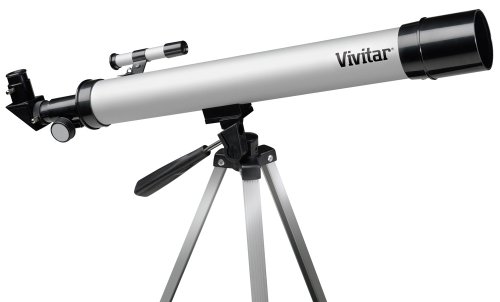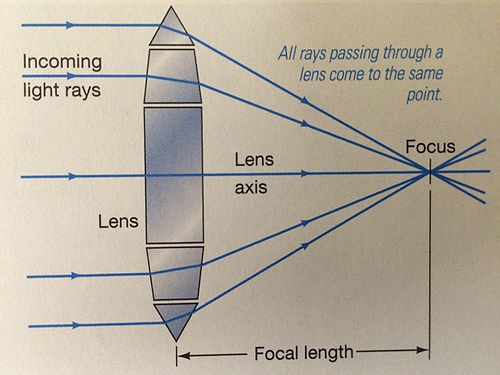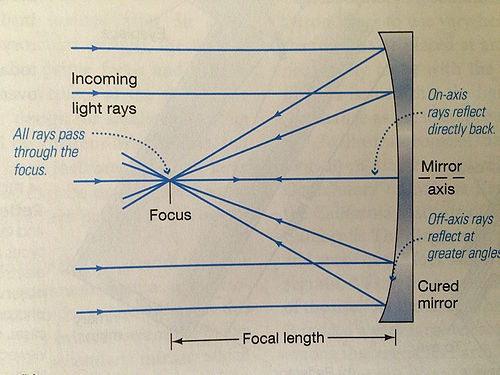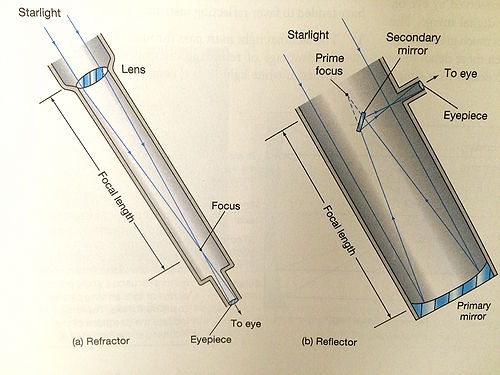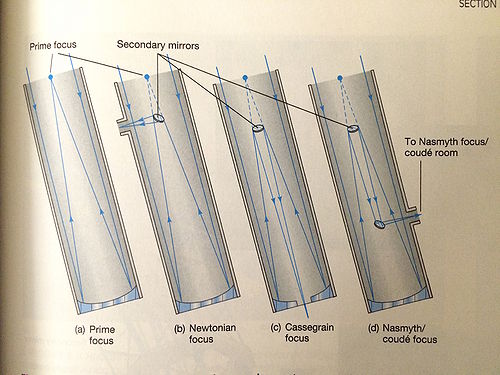Telescopes: Difference between revisions
Wgreenwald3 (talk | contribs) No edit summary |
Physicsfun12 (talk | contribs) No edit summary |
||
| Line 17: | Line 17: | ||
===Refracting Telescopes=== | ===Refracting Telescopes=== | ||
[[File:IMG 3035.JPG|500px|]] | [[File:IMG 3035.JPG|500px|]] | ||
Revision as of 23:41, 5 December 2015
Telescopes are tools used to study the night sky. The key to any telescope is getting as much information from the night sky as possible. This is done by taking advantage of the physical properties of light.
The Main Idea
Telescopes utilize systems of Mirrors and Lenses (sometimes very complicated) to take as much information from light as possible. Most telescopes used today are reflecting telescopes. The two major types of visible light telescopes are reflecting and refracting. Reflecting telescopes tend to be more compact and easier to maintain.
Parts of a Telescope
A telescope consists of
Important Equations
Magnification is equal to the focal length of the objective lens divided by the focal length of the eyepiece.
The light gathering ability of a telescope is equal to the area of its objective lens.
Refracting Telescopes
Reflecting Telescopes
Different Models of Reflecting Telescopes
Connectedness
As an aerospace engineering major, I found this topic to be very related to my major. Aerospace vehicles are often used to place telescopes in better locations for observation.
History
The earliest telescopes were refracting telescopes. Galileo Galilei was one of the first notable people to use a telescope to observe the night sky. Galileo's telescope was a simple refracting and was the best at its time. He used it to observe many celestial objects including Mars and even 4 of Jupiters moons.
External links
References
"Telescope - Google Search." Telescope - Google Search. N.p., n.d. Web. 05 Dec. 2015. Chaisson, Eric, and Steve McMillan. "Astronomy Today." Astronomy Today. Pearson, n.d. Web. 05 Dec. 2015.
